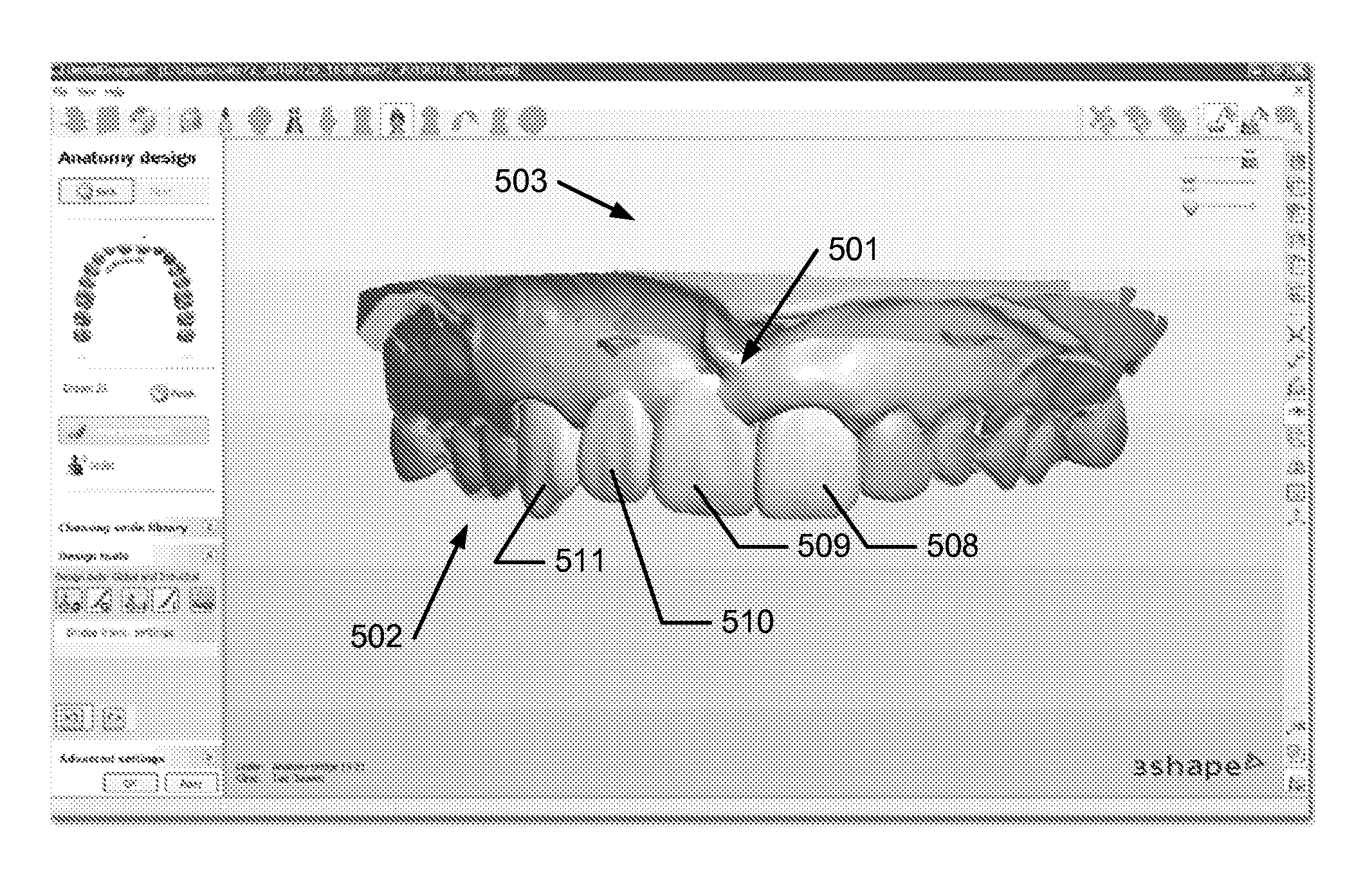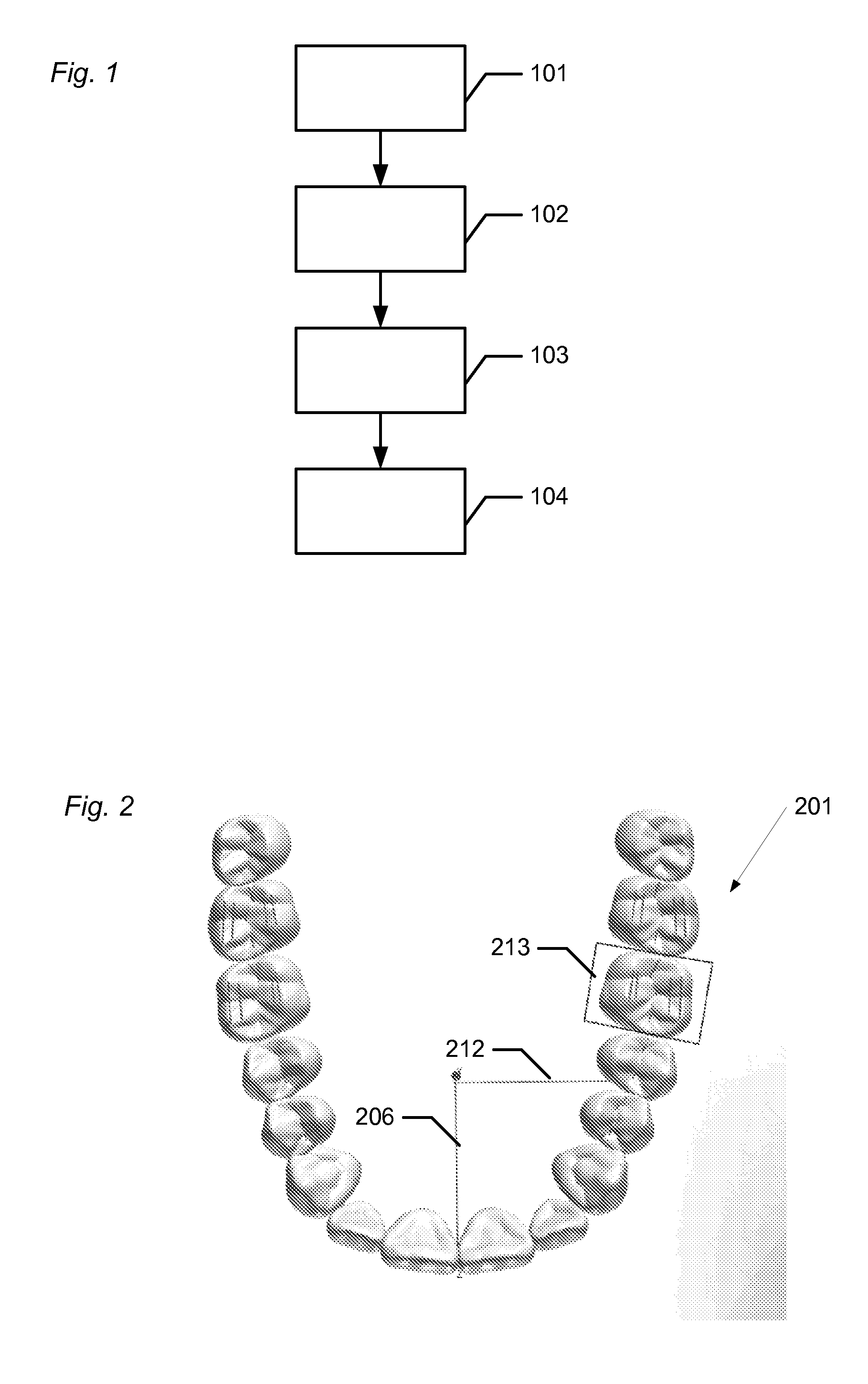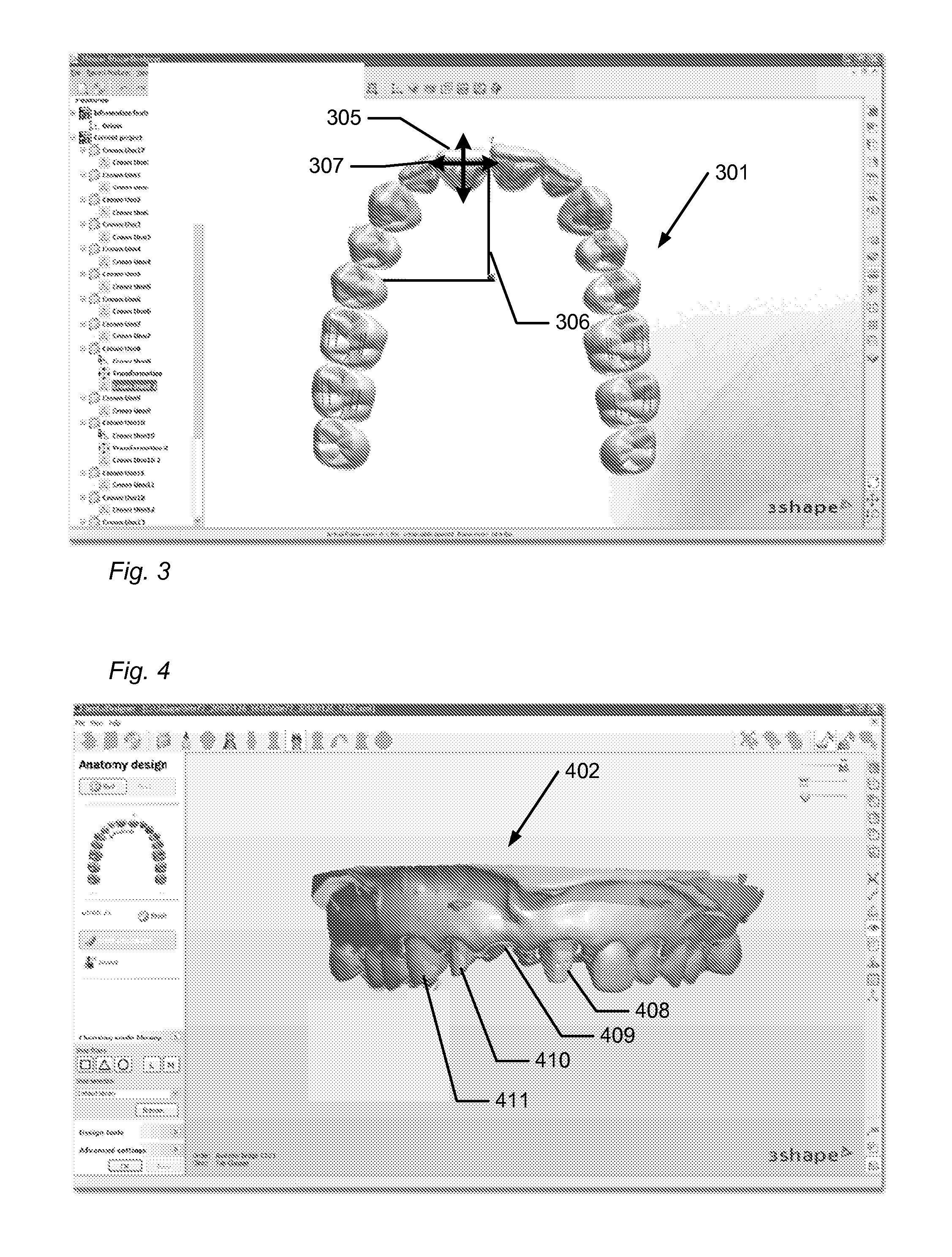Method of composing and designing a set of teeth
a computer-implemented method and dental technology, applied in the field of dental implants, can solve the problems of destroying the entire aesthetics, high accuracy requirements for dental implants, time-consuming, etc., and achieve the effect of easy user-friendly design of desired teeth and nice dental implants
- Summary
- Abstract
- Description
- Claims
- Application Information
AI Technical Summary
Benefits of technology
Problems solved by technology
Method used
Image
Examples
Embodiment Construction
[0167]In the following description, reference is made to the accompanying figures, which show by way of illustration how the invention may be practiced.
[0168]The method is performed in a computer program suitable for performing the method. A screen connected to the computer may be provided on which the user can view the user interface of the program, and by means of e.g. a computer keyboard, a computer mouse, a touch screen, a space ball, a touchpad etc. the user can perform demands, such as selecting features and modifying features viewed on the screen. The program performs calculations or shows the changes on the screen view corresponding to the demands the user has made. The program, in which the method can be performed, can be a part of a larger program, it can be a separate program, the program can have means for communicating with other programs, other hardware, software or firmware etc.
[0169]FIG. 1 shows an example of a flow chart of the method.
[0170]In step 101 a composed se...
PUM
 Login to View More
Login to View More Abstract
Description
Claims
Application Information
 Login to View More
Login to View More - R&D
- Intellectual Property
- Life Sciences
- Materials
- Tech Scout
- Unparalleled Data Quality
- Higher Quality Content
- 60% Fewer Hallucinations
Browse by: Latest US Patents, China's latest patents, Technical Efficacy Thesaurus, Application Domain, Technology Topic, Popular Technical Reports.
© 2025 PatSnap. All rights reserved.Legal|Privacy policy|Modern Slavery Act Transparency Statement|Sitemap|About US| Contact US: help@patsnap.com



